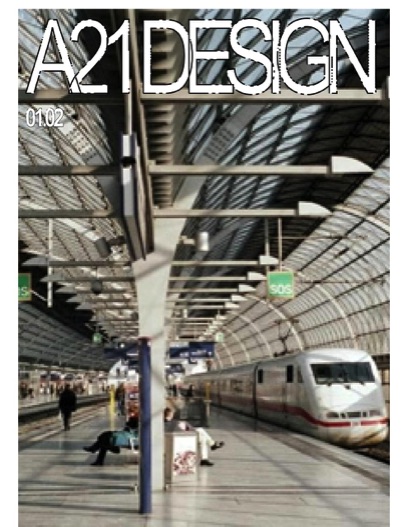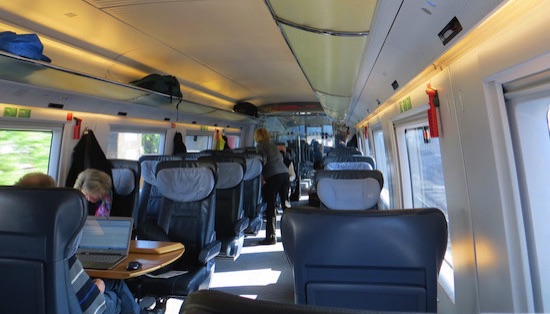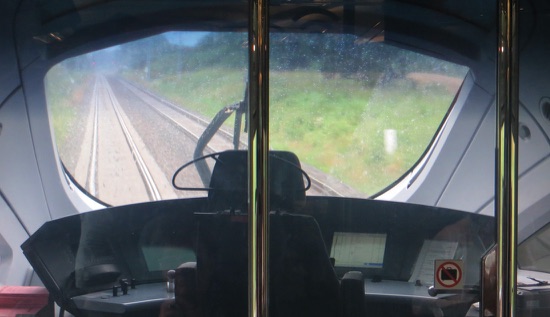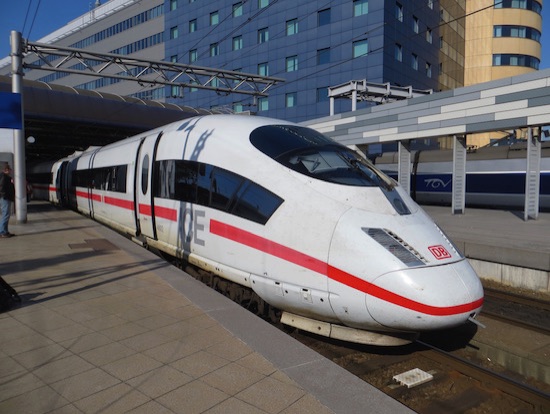
January 2002
High Speed Rail Investment
Do yourself a favor, if you care about the future of California. Take a flight from Los Angeles to San Francisco. Go to Europe and take a high speed train. What was the more pleasant experince?
After contrasting the experiences, consider the investment California is poised to make. Imagine a 2-1/2 trip from the Bay Area to LA on a similar, yet faster, train. Food on board, no check-in two hours before departure, outlets, wireless internet access, and cellphone service for the entire trip. Predictable schedules, no cancellations, endless airport corridors replaced by urban stations with shops, homes and offices.
If you don't believe that a train can be faster than a plane, consider a recent trip I made, traveling from San Francisco to Los Angeles on a Saturday morning...
From my apartment, I allotted 45 minutes to get to the Caltrain Station at Fourth and King Streets. I got to the station early, so I grabbed a coffee for the train. The trip to Millbrae was 25 minutes, and 15 minutes later I was printing my boarding pass from the automated kiosk in the north terminal.
Total time to SFO: 85 minutes Total cost: $2.25
Now, I could have made it to the airport slightly faster with Supershuttle or a cab, but a shuttle can take over an hour to the airport, depending on the stops, they ask that you make your pick-up reservation for 2 hours before you need to be at the airport, and it's $16 + tip. A cab can make it in about 45 minutes, without traffic, but that's over $30.
Once at SFO, I made it easy through security (I know a check-in with light traffic) and had over an hour until my flight began boarding.
Total time from arrival at SFO to the closure of the plane's door: 9o minutes.
Even on a Satruday morning, we spent 15 minutes cruising the tarmac before take off. Once in the air, it was about 50 minutes until landing at LAX. At LAX, our gate wasn't ready, so we spent 25 minutes in the plane, 1,000 feet from our gate.
Total time from take off to exiting plane: 90 minutes
Add five minutes to navigate my way out of the airport to meet my friend curbside (no checked luggage).
Total trip time: 4.5 hours
Consider the alternative voters will be offered in November 2004....
In November of 2004, California voters will be asked to ok bonds to build the initial phase of the high speed rail system, from the Transbay Terminal in San Francisco to Union Station in Los Angeles. The initial line will also serve San Jose, Fresno, Bakersfield and major cities in between. Total travel time from San Francisco (TTT) to Los Angeles (LAUS) on the express train will be 2 hours and 30 minutes, and the initial system will be in operation by 2010.
Let's take my trip to Los Angeles by train....
From my apartment to the Transbay Terminal, we'll use the same 45 minute travel time. I can walk to the TTT in 30 minutes, or probably make it there in the same time with MUNI.
Total time to TTT: 45 minutes
Trains require no advance check in, and because they have many doors, you can (and I have) made it onto a train many times (here and abroad) with a minute or two to spare. Regardless, I got to the station with 15 minutes to spare.
Once on the train, it's 2.5 hours to LAUS. On the train, I grab breakfast and fiddle with my computer, surfing the net over the train's wireless network.
Total time aboard train: 2.5 hours
My friend meets me at LAUS, where I've arrived 3 hours and 15 minutes after I left my apartment. That's an hour and 15 minutes sooner than by plane, and even in economy class on the train, the seating was much more comfortable than even business class on a plane, and I was able to order what I wanted for breakfast. Oh, and they don't care if your "electronic devices" are on or off, there's full net and cell access, and it's cheaper than flying.
The trip on a real high speed train is nothing like any train you've ridden in the United States. The train widely regarded as the top of the line is the German ICE 3 train. It is capable of running at over 200 mph, and its interior is trimmed in wood and leather, for both quailty and environmental reasons. Electronic displays in each car give the time to the next station, the current speed, and other information.
Passengers can ride right behind the operator, and see the view out the front of the train through an LCD glass wall. This glass wall can be darkened when necessary. Firsthand, it looks like a steamed up glass when it is darkened. This accounts for the blur in the photo , taken on an ICE-3 train running from Stralusund to Berlin in July of 2017.
The exterior is just as stunning.


